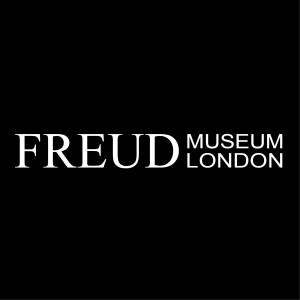
Panel 5: Kino-Analytic Panel
view more
Sincerity and Freedom in Psychoanalysis: a studio conference inspired by Sándor Ferenczi's Clinical Diary
18-20 October 2013
Two films by Em Cooper, introduced and discussed by Kata Lénárd and Petra Kovács, with Em Cooper.
Facilitator: Kanaan Navaratnam
British film director Em Cooper was inspired by Sándor Ferenczi’s ‘confusion of tongues’ theory. The film (2010) of the same title combines animation and live action seeking to capture the chaotic inner experiences, complex psychic, perceptual and memory distortions of the person suffering from trauma.
Please note that the films themselves have been cut from this recording.
Confusion of Tongues
The short film – using only a scarce number of words – depicts with incredible power a trauma that can hardly be recounted verbally. Rapid changing of images, colours and shapes, the transitions of contoured and obscure, shifts between ’real’ and ’imaginary’ figures – this visual montage synthesizes multiple ideas in a powerful visual language. The blending of animation and live action creates a chaotic, surreal world that is both frightening and moving. The film, as a work coming into existence in transitional space, zooms in and out.
Em Cooper’s movie helps encounter what is incomprehensible, inexplicable and impossible to apprehend.
The film is about a young woman haunted by a recurring childhood memory. Gripped by her fear of a window left open she begins to recall a much deeper trauma. Likewise in some sentences of the Ferenczi-essay, heavy layers of meanings are building upon each other through the images of the movie. The text and special language of the original paper is turned into a visual language with astounding accuracy – thus the inner content of the coherent text, the non-narratibility of the trauma are transformed into an experience affecting our primary senses through images and sounds difficult to reflect (upon) and integrate.
In our lecture we observe the role of live action and animation in capturing the dynamics of confusion of tongues and how it affects the receivers/audience. How is confusion of tongues portrayed today in an animation employing oil-painting technology? What extra meanings are given by images, colours and sounds to the issues of seduction and trauma, construction and reconstruction, narrative and objective truth? The real, live hand, flashing onto the screen, sketching up the animation parts of the film may also actuate thoughts concerning the processing of the trauma.
The Nest and trauma
The short film of British film director Em Cooper The Nest (2010) tells the parallel story of a domestic abuse. The very same morning is shown first from the mother’s point of view, then from her daughter’s angle. The ”dissociated” images of the film blur the line between past and present, fantasy and reality, mother’s and daughter’s story. Is it the mother’s or the daughter’s trauma? Or the trauma suffered by the mother is mirrored in fantasy, and this unprocessed trauma presents itself in the dynamics of the father-daughter relationship, or even, in all three lives?
After watching the film we will discuss how stories that are verbally ’non-narratable’ but live deep inside us can emerge, come back to life, be animated through various media, e.g. the visual arts. The director employs the ambiguity, “double senses” (M.L. Hernandez) immanent in animation to represent the interplay between fiction and reality. The intermediality of animation and live action helps getting to a closer understanding of domestic violence, the dynamics of abuse and transgenerational trauma.
More Episodes
Closing the Circle from Theory to Therapy
 2015-09-22
2015-09-22
 2015-09-22
2015-09-22
Trailer: Festival of the Unconscious
 2015-08-28
2015-08-28
 2015-08-28
2015-08-28
Rorschach Audio
 2015-07-24
2015-07-24
 2015-07-24
2015-07-24
Conference: Music & Psychoanalysis 4
 2015-07-14
2015-07-14
 2015-07-14
2015-07-14
Conference: Music & Psychoanalysis 3
 2015-07-14
2015-07-14
 2015-07-14
2015-07-14
Conference: Music & Psychoanalysis 2
 2015-07-14
2015-07-14
 2015-07-14
2015-07-14
Conference: Music & Psychoanalysis 1
 2015-07-14
2015-07-14
 2015-07-14
2015-07-14
Our Strange Thoughts
 2015-07-09
2015-07-09
 2015-07-09
2015-07-09
The Many Faces of 'Critical Psychotherapy'
 2015-06-25
2015-06-25
 2015-06-25
2015-06-25
012345678910111213141516171819
Create your
podcast in
minutes
- Full-featured podcast site
- Unlimited storage and bandwidth
- Comprehensive podcast stats
- Distribute to Apple Podcasts, Spotify, and more
- Make money with your podcast
It is Free
- Privacy Policy
- Cookie Policy
- Terms of Use
- Consent Preferences
- Copyright © 2015-2024 Podbean.com




